Содержание
- 2. Programming Paradigm A way of conceptualizing what it means to perform computation and how tasks to
- 3. cs784(Prasad) L5Pdm Imperative vs Non-Imperative Functional/Logic programs specify WHAT is to be computed abstractly, leaving the
- 4. cs784(Prasad) L5Pdm Illustrative Example Expression (to be computed) : a + b + c Recipe for
- 5. cs784(Prasad) L5Pdm Imperative vs Non-Imperative Functional/Logic style clearly separates WHAT aspects of a program (programmers’ responsibility)
- 6. cs784(Prasad) L5Pdm Procedural vs Functional Program: a sequence of instructions for a von Neumann m/c. Computation
- 7. cs784(Prasad) L5Pdm Functional Style : Illustration Definition : Equations sum(0) = 0 sum(n) = n +
- 8. cs784(Prasad) L5Pdm Paradigm vs Language Imperative Style i := 0; sum := 0; while (i i
- 9. cs784(Prasad) L5Pdm Role of Variables Imperative (read/write) i 0 1 2 3 ... sum 0 1
- 10. cs784(Prasad) L5Pdm Bridging the Gap Tail recursive programs can be auomatically optimized for space by translating
- 11. cs784(Prasad) L5Pdm Analogy: Styles vs Formalisms Iteration Tail-Recursion General Recursion Regular Expression Regular Grammar Context-free Grammar
- 12. cs784(Prasad) L5Pdm Logic Programming Paradigm Integrates Data and Control Structures edge(a,b). edge(a,c). edge(c,a). path(X,X). path(X,Y) :-
- 13. cs784(Prasad) L5Pdm Declarative Programming A logic program defines a set of relations. This “knowledge” can be
- 14. cs784(Prasad) L5Pdm Append in Prolog append([], L, L). append([ H | T ], L, [ H
- 15. cs784(Prasad) L5Pdm Different Kinds of Queries Verification sig: list x list x list append([1], [2,3], [1,2,3]).
- 16. cs784(Prasad) L5Pdm More Queries Constraint solving sig: list x list -> list append( R, [2,3], [1,2,3]).
- 17. cs774 (Prasad) L1LP Trading expressiveness for efficiency : Executable specification
- 18. cs784(Prasad) L5Pdm Object-Oriented Style Programming with Abstract Data Types ADTs specify/describe behaviors. Basic Program Unit: Class
- 19. cs784(Prasad) L5Pdm Procedural vs Object-Oriented Emphasis on procedural abstraction. Top-down design; Step-wise refinement. Suited for programming
- 20. cs784(Prasad) L5Pdm Integrating Heterogeneous Data In C, Pascal, etc., use Union Type / Switch Statement Variant
- 21. cs784(Prasad) L5Pdm Comparison : Figures example Data Square side Circle radius Operation (area) Square side *
- 22. cs784(Prasad) L5Pdm Adding a new operation Data ... Operation (area) Operation (perimeter) Square 4 * side
- 23. cs784(Prasad) L5Pdm Adding a new data representation Data ... rectangle length width Operation (area) ... rectangle
- 24. cs784(Prasad) L5Pdm Procedural vs Object-Oriented New operations cause additive changes in procedural style, but require modifications
- 25. cs784(Prasad) L5Pdm Object-Oriented Concepts Data Abstraction (specifies behavior) Encapsulation (controls visibility of names) Polymorphism (accommodates various
- 26. cs784(Prasad) L5Pdm Example : Role of interface in decoupling Client Determine the number of elements in
- 27. cs784(Prasad) L5Pdm Client in Scheme (define (size C) (cond ( (vector? C) (vector-length C) ) (
- 29. Скачать презентацию












![cs784(Prasad) L5Pdm Append in Prolog append([], L, L). append([ H](/_ipx/f_webp&q_80&fit_contain&s_1440x1080/imagesDir/jpg/356033/slide-13.jpg)




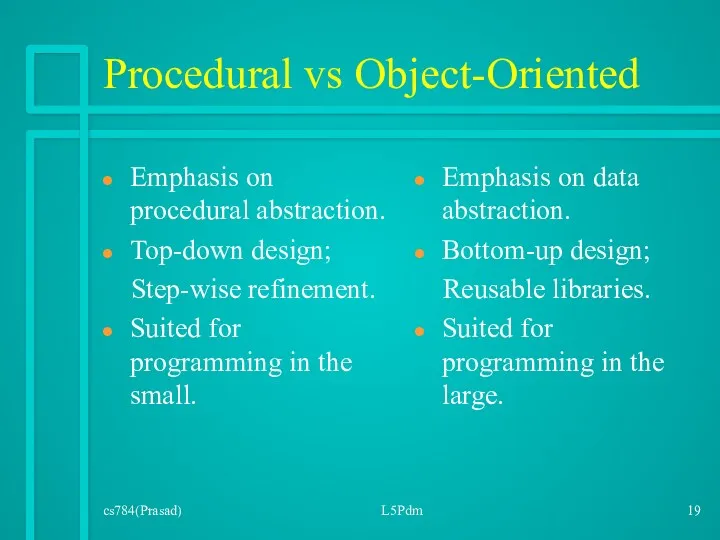

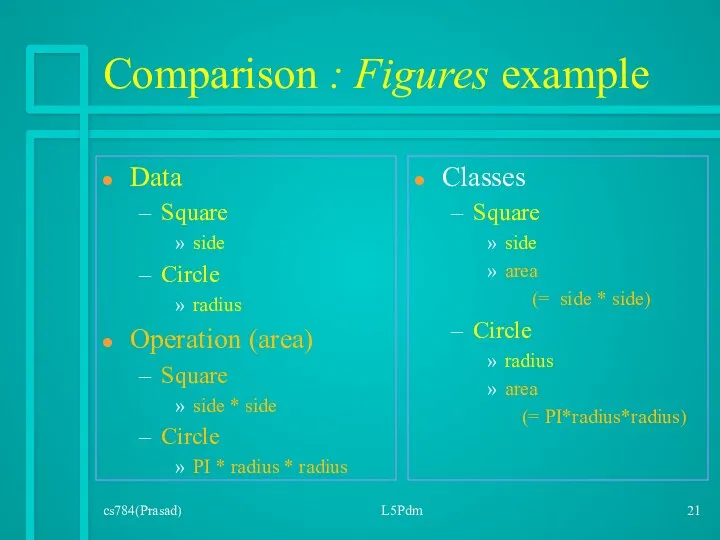
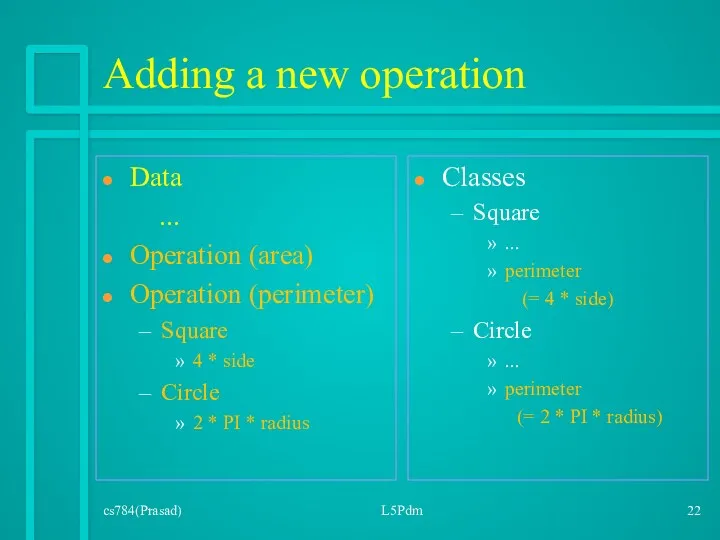

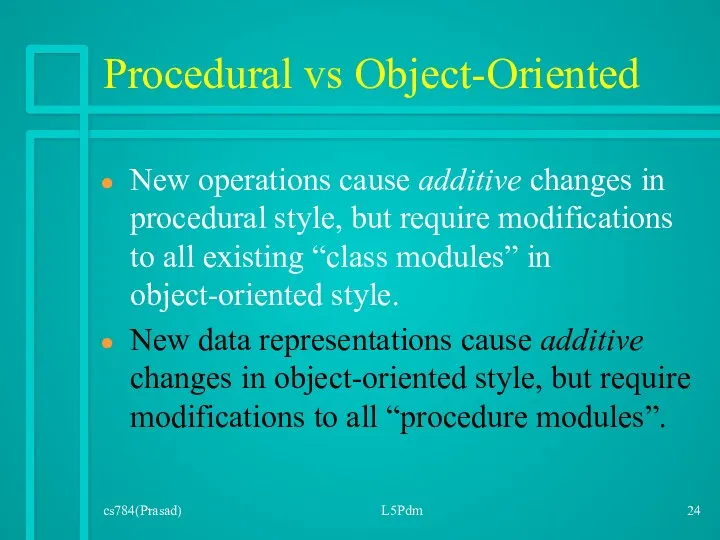
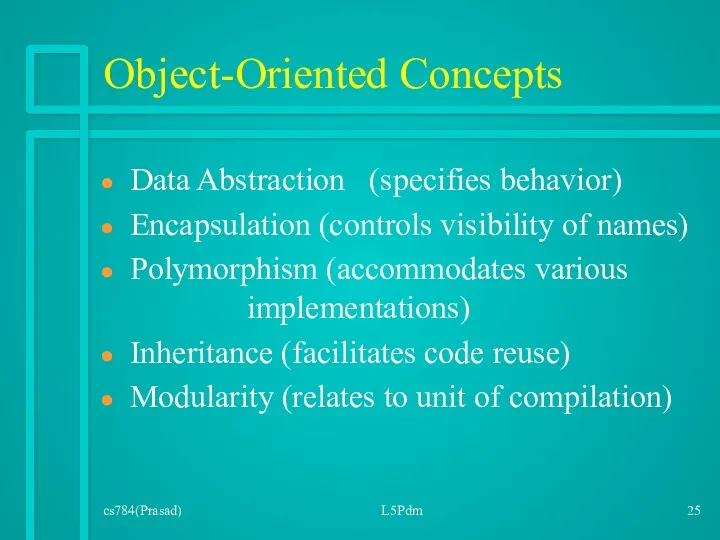
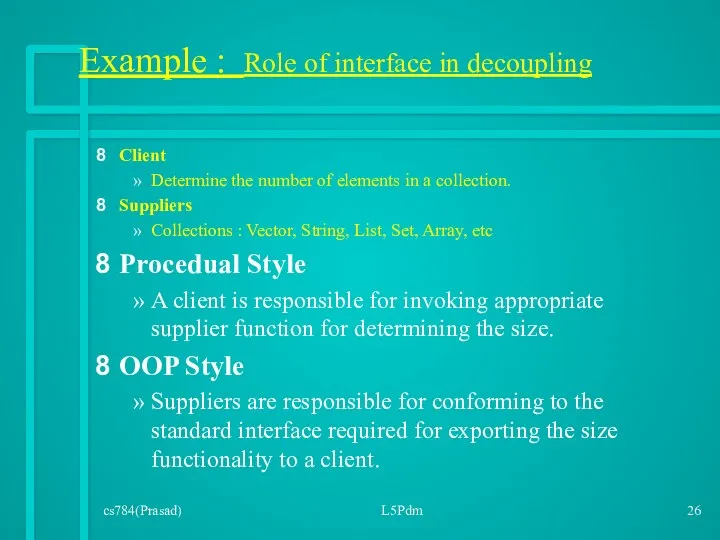
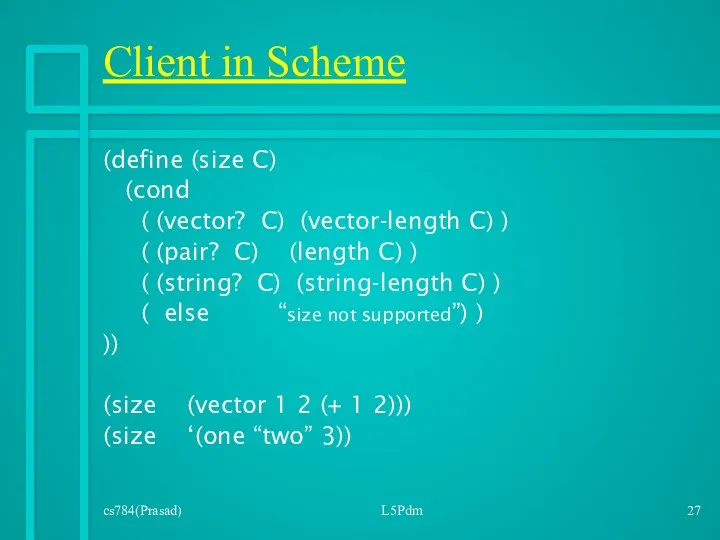
 Сервис Отвечает аудитор
Сервис Отвечает аудитор Типы данных и переменные
Типы данных и переменные Управление ремонтами и обслуживанием оборудования решение на основе 1С:Предприятие 8
Управление ремонтами и обслуживанием оборудования решение на основе 1С:Предприятие 8 Файловая система
Файловая система Язык программирования Pascal. Элементы языка
Язык программирования Pascal. Элементы языка Экспертные системы
Экспертные системы Арифметические операции в Паскале
Арифметические операции в Паскале Реализация виртуальных локальных сетей
Реализация виртуальных локальных сетей Электромагнитное излучение и его влияние на здоровье человека
Электромагнитное излучение и его влияние на здоровье человека Dressage Training Tips from Experts
Dressage Training Tips from Experts Трохи фактів про Excel…
Трохи фактів про Excel… Муниципальный этап Всероссийской олимпиады школьников по информатике
Муниципальный этап Всероссийской олимпиады школьников по информатике Работа с текстовыми объектами в текстовом редакторе
Работа с текстовыми объектами в текстовом редакторе Описание игры Dota2
Описание игры Dota2 Адресация в сетях TCP/IP
Адресация в сетях TCP/IP Строки. Лекция 4
Строки. Лекция 4 Приклад роботи з матрицями: створення матриці
Приклад роботи з матрицями: створення матриці Цвет и цветовые модели в компьютерной графике
Цвет и цветовые модели в компьютерной графике Представление нечисловой информации в компьютере.
Представление нечисловой информации в компьютере. Фреймворк JQuery
Фреймворк JQuery Введение в CSS. Лекция 2.1
Введение в CSS. Лекция 2.1 Построение диаграммы типа график в электронной таблице по значению функций
Построение диаграммы типа график в электронной таблице по значению функций Платформа Цифровой алфавит
Платформа Цифровой алфавит Объектные привилегии
Объектные привилегии История сети Интернет
История сети Интернет Знакомство с Интернетом
Знакомство с Интернетом Функциональное моделирование систем управления с использованием методологии IDEF0
Функциональное моделирование систем управления с использованием методологии IDEF0 Знакомство с Word
Знакомство с Word